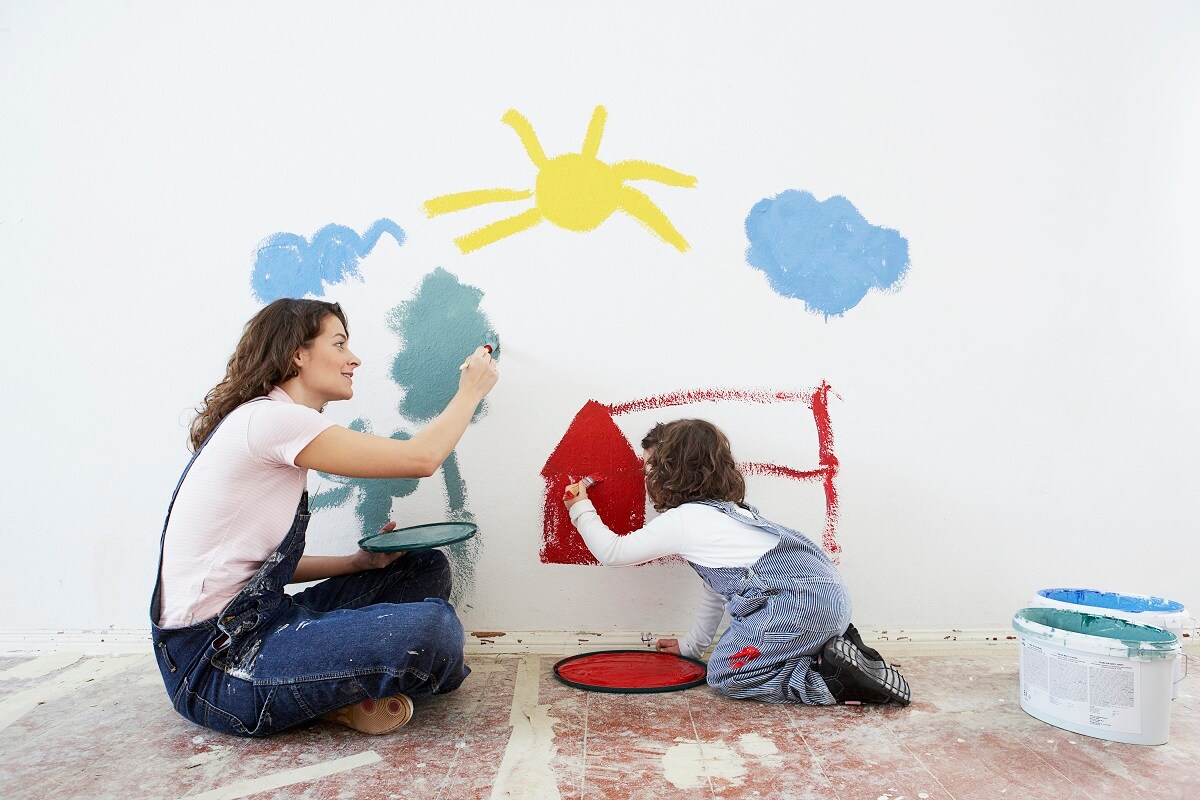by freelance writer Riley Herder
>> Looking for a housekeeper? Find one in your area now.
As children grow, it is challenging to keep up with the necessary adjustments to suit their rapid changes, as well as their developing personalities. One important way parents can do this is by keeping their bedrooms up to date.
From diapers to graduation, your child’s room will serve as a place for rest, play, learning, expression, quiet contemplation and imagination. They will learn discipline through keeping it clean and organized. They’ll discover and cultivate talents, hobbies and skills in a safe and private space.
Your job is mainly to stay out of the way, and teach them to be good stewards of the space they call their own. But at some point, they will outgrow the style or layout of their room, and it may become necessary to fundamentally change the room to better suit them.
Remodelling a kid’s room can be much easier than it sounds, and you don’t need much experience in home improvement. Here are 7 tips to consider when planning a bedroom makeover:
1. Choose a theme
Children express themselves from early ages, and while their interests change year after year, having their space show off a positive theme can help them connect more deeply with the things that inspire them. Some children may want a theme based on a TV or movie character, and that is perfectly fine (depending on your approval of the character). But here are some more generic ideas to get the ball rolling:
- Sports
- Nature/woodland
- Space/stars
- Musical instruments
- Wild West
- Cities of the World
- Rainforest
- Underwater
Decorating the room with art that highlights their interests will help spark creativity and make their rooms feel comfortable and personal to them.
2. Control clutter with creative storage
It isn’t easy to enjoy a room that always feels messy, even when things are put away. To keep the room clean, and easy to clean, you will want to maximize your storage potential while minimizing bulky furniture. You can do this in several ways, such as the following:
- Try a loft bed with storage space or a desk beneath it (and be sure to install a safety rail).
- Go vertical and utilize shelves for toys rather than keeping them in clunky bins and trunks.
- Donate old toys to local toy drives.
3. Use bold colours or patterns
Bright and bold colours can positively affect your mood! Find a colour scheme that incorporates various hues that stand out. You can also incorporate elements of your theme to work with the colours. Large vinyl wall decals are great for this if your kids are old enough to not peel them off.
4. Make the bed the focal point of the room
If there is room in the budget, choose a bed that is fun and creative. After all, it is the place where the most time is spent, by far. A race car bed, or one with a frame shaped like a house can be great for a child’s inspiration and imagination.
Also, consider choosing bedding made from organic, sustainable materials. Many sheets, pillows, and mattresses contain harmful toxins, and are otherwise bad for the environment. Seek alternatives, such as sheets made from organic cotton or wool and rest assured your child is sleeping through the night free of such chemicals pressed against its little face.
5. Involve your child in the big decisions
Remodelling your child’s room is not just something you can do for them. It can serve as a great lesson in decision-making and planning. Have them help you come up with ideas, picking out colours and bedding, etc. They’ll enjoy their room so much more knowing that they helped design it.
6. Let them help work
Similarly, to the decision-making, helping with the work of remodelling can provide a great lesson for your child, as well as foster a sense of pride in the work it puts in. Have them paint a section of the wall, or help assemble furniture, rip out old drywall, etc. You will be teaching them handy skills they can hold on to for life. Obviously limit this to what is age-appropriate for your child.
Take lots of pictures during the transformation of the room and create a photo album. As your child grows older, they (and you) will appreciate the sweet memories of working together on the first renovating project.
7. Remember that it’s their room, not yours
It can be easy to make decisions based on how you’d like your own room to be. While minimizing clutter is important in creating a space to think clearly in, it is also true that not all clutter is bad. A room that is too sterile and organized can feel cold to children, and they may feel less inclined to play there. And the choices for furniture should be based on their interests and abilities, rather than what looks the nicest. For instance, a desk that takes up a large chunk of the room is well worth the loss of space if your child likes to draw or craft and needs a larger surface area to do it.
Most of all, have fun! It’s not just about the result—doing a project with your child is an excellent relationship builder. Enjoy every minute of it.
